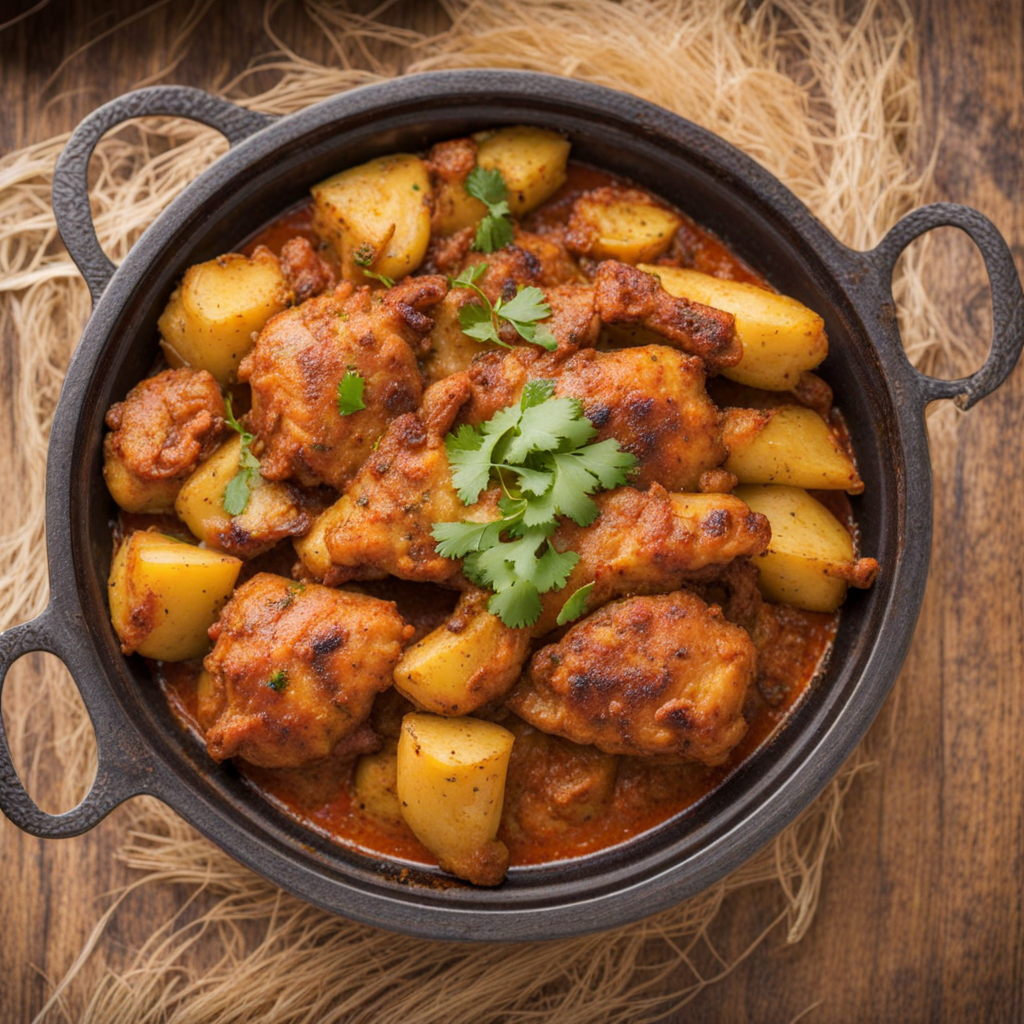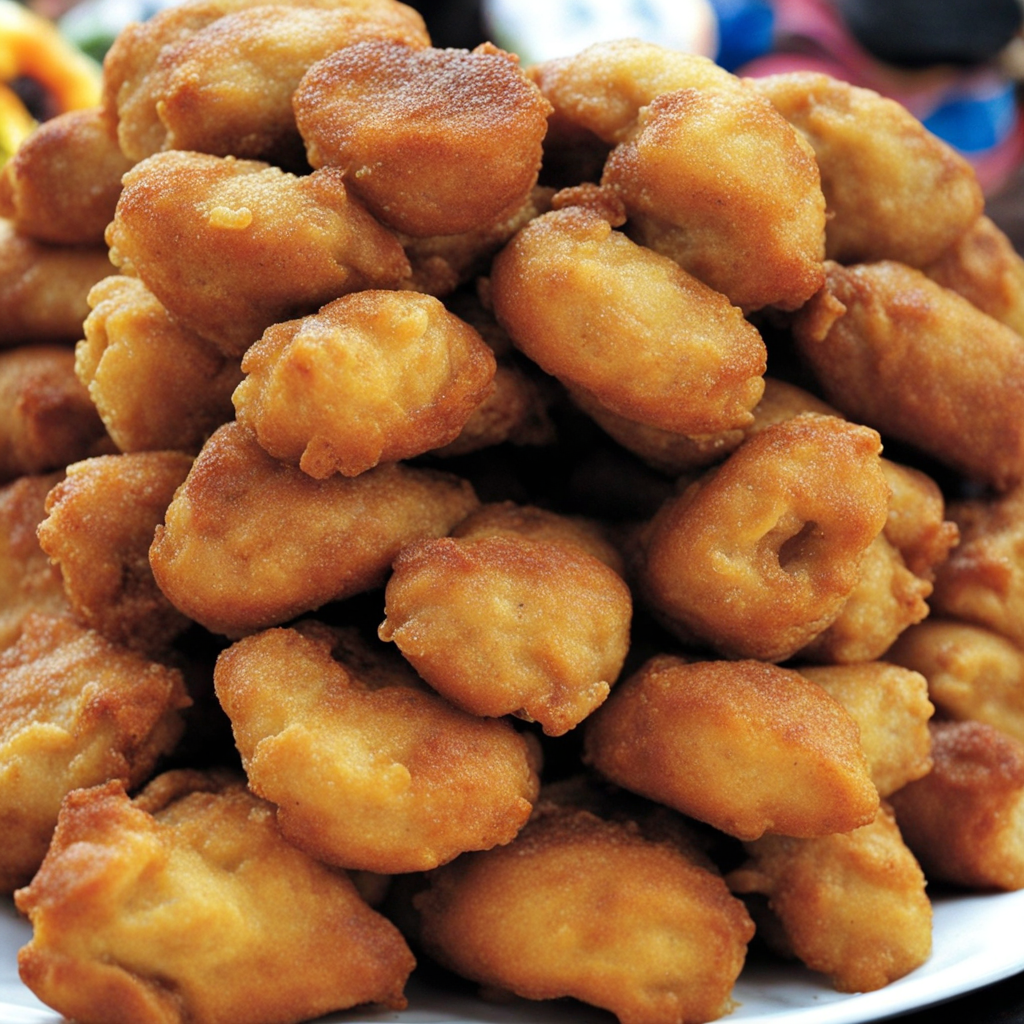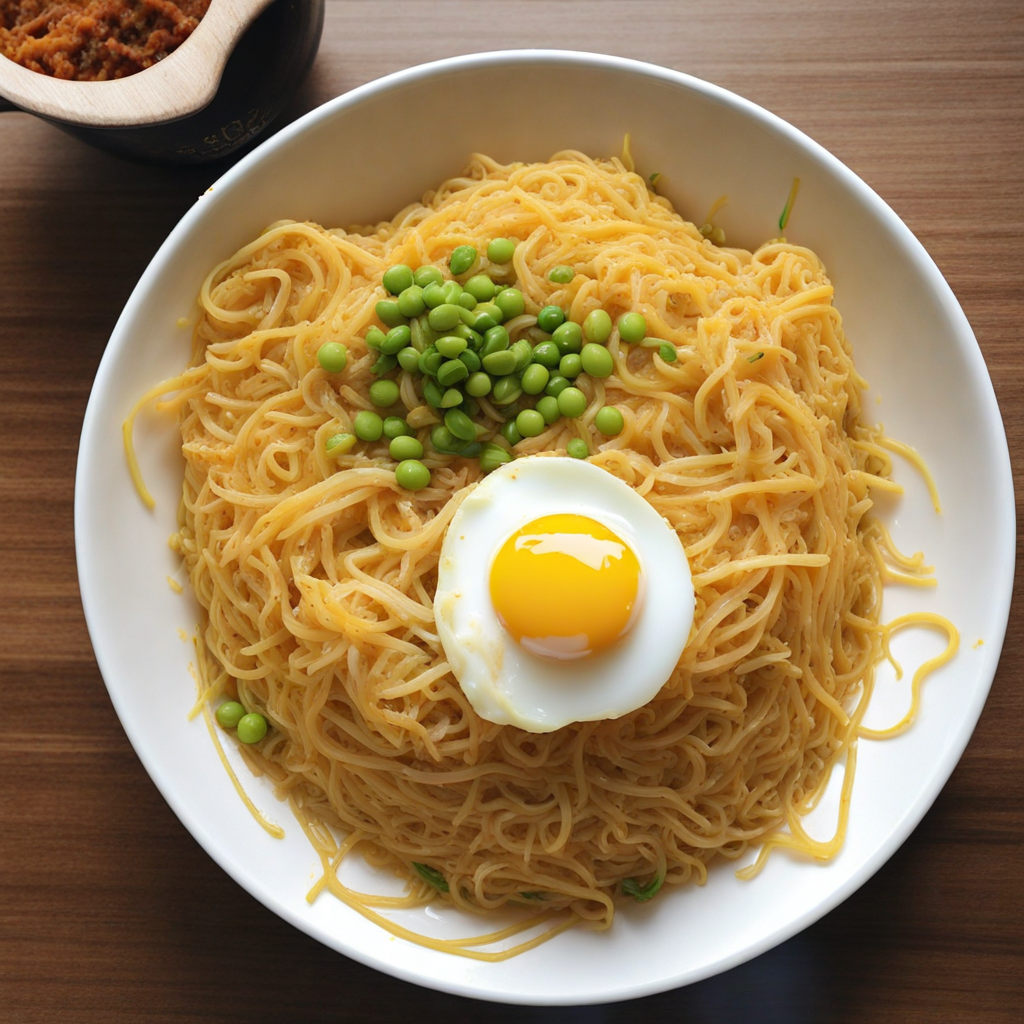Cuñapé
Cuñapé is a delightful Bolivian treat that embodies the rich culinary traditions of the Andes. These small, round bread rolls are primarily made from cassava flour, which gives them a unique gluten-free quality, making them a staple for those with gluten sensitivities. The dough is typically enriched with cheese, often a local variety like queso fresco, which adds a creamy texture and savory flavor that beautifully complements the subtle sweetness of the cassava. The combination of these ingredients creates a soft, chewy interior with a slightly crisp exterior, making each bite a satisfying experience. Traditionally enjoyed as a snack or appetizer, Cuñapé can be found at street stalls and markets throughout Bolivia, where they are often served warm and fresh from the oven. The aroma of baking cheese and cassava wafts through the air, drawing in locals and visitors alike. Cuñapé is not only a beloved comfort food but also a reflection of Bolivia's diverse agricultural landscape, showcasing the importance of cassava and cheese in the regional diet. Each region may have its own twist on the recipe, incorporating different cheese types or seasonings, making every bite a potential adventure in flavor. This delectable bread has gained popularity beyond Bolivia's borders, as food lovers seek out new taste experiences. Pairing Cuñapé with a variety of dips or salsas can enhance its flavor profile, and it serves as an excellent accompaniment to hearty soups or stews. Whether enjoyed on its own or as part of a larger meal, Cuñapé offers a delicious introduction to Bolivian cuisine, inviting you to savor the unique blend of textures and flavors that define this exquisite dish.
How It Became This Dish
Cuñapé: The Cheesy Delight of Bolivia Origins and Historical Context Cuñapé is a traditional Bolivian dish that embodies the rich culinary heritage of the country, particularly in the eastern regions such as Santa Cruz and Beni. This delightful food is essentially a cheese bread made primarily with cassava flour (yuca) and cheese, providing a unique taste and texture that reflects the indigenous influences of Bolivia’s diverse cultural tapestry. The origins of cuñapé can be traced back to the indigenous peoples of the region, who have long utilized cassava as a staple food. Cassava, a root vegetable native to South America, is a key ingredient in the traditional diets of many indigenous groups, providing sustenance and versatility. The process of making cuñapé likely evolved as indigenous communities began to incorporate dairy products, particularly cheese, into their cuisine, influenced by Spanish colonization and the introduction of new agricultural practices. The term “cuñapé” itself is derived from the Guaraní language, reflecting the influence of indigenous languages in Bolivia. While it has undergone various adaptations over the years, the essence of cuñapé remains deeply rooted in its indigenous origins, symbolizing the blend of native and colonial culinary practices. Cultural Significance Cuñapé is not just a food item; it holds significant cultural value in Bolivian society. Often prepared for special occasions and communal gatherings, it serves as a symbol of hospitality and community. Families come together to create cuñapé, sharing stories and traditions while engaging in the age-old practice of cooking. This communal aspect is vital to Bolivian culture, where food is often seen as a means to strengthen bonds within families and communities. In addition to its role in family gatherings, cuñapé is often enjoyed during festivals and religious celebrations, particularly in the Santa Cruz region. It is common to see vendors selling this delicious bread at local markets and fairs, where it is enjoyed alongside other traditional foods. The act of sharing cuñapé during these events fosters a sense of unity and cultural pride, as it represents a connection to the land and the people who have cultivated these culinary traditions over generations. Preparation and Variations The preparation of cuñapé is relatively straightforward, yet it requires a certain level of skill to achieve the perfect texture. The main ingredients include cassava flour, cheese (often queso fresco), eggs, and milk. Some recipes may include additional ingredients such as butter or baking powder to enhance the flavor and texture. To make cuñapé, the cassava flour is mixed with the cheese and other ingredients to form a dough. This dough is then shaped into small balls or disks and baked until golden brown. The result is a delightful bread with a crispy exterior and a soft, chewy interior, with the distinct flavor of cheese permeating every bite. There are several regional variations of cuñapé, reflecting the local ingredients and culinary preferences. In Santa Cruz, for instance, the cheese used may vary from fresh cheese to more aged varieties, while in other regions, the addition of herbs or spices can create a unique twist on the traditional recipe. Some families even experiment with different types of flour, incorporating local grains and flavors, showcasing the creativity and adaptability of Bolivian cuisine. Development Over Time As Bolivia has modernized, so too has the preparation and consumption of cuñapé. While traditional methods of making this cheese bread still prevail, contemporary twists have emerged, with chefs and home cooks alike experimenting with new flavors and presentations. Gourmet versions of cuñapé can now be found in upscale restaurants and food festivals, often featuring artisanal cheeses or unique fillings to attract a broader audience. The globalization of food culture has also played a role in the evolution of cuñapé. As Bolivians travel and migrate, they bring their culinary traditions with them, leading to the spread of cuñapé beyond national borders. In cities with significant Bolivian populations, such as Buenos Aires or Madrid, one can find restaurants that serve cuñapé, introducing this beloved dish to new audiences and allowing for further innovation. Moreover, the rise of social media and food blogging has contributed to the renewed interest in traditional Bolivian foods, including cuñapé. Home cooks and chefs are sharing their recipes and stories online, fostering a sense of community and encouraging a younger generation to connect with their culinary heritage. This digital renaissance has also paved the way for the international appreciation of cuñapé, as food enthusiasts discover the unique flavors of Bolivian cuisine. The Future of Cuñapé As Bolivia continues to navigate the complexities of modernity while honoring its rich cultural heritage, cuñapé stands as a testament to the resilience of traditional foods. The dish not only reflects the history and identity of Bolivia but also serves as a bridge between past and present, indigenous and modern culinary practices. In the future, cuñapé may see further innovations as chefs experiment with fusion cuisines, incorporating international flavors while preserving its traditional essence. The growing awareness of gastronomy as an integral part of cultural identity may also lead to a resurgence in the appreciation of cuñapé, ensuring that this beloved dish remains a staple in Bolivian households and beyond. In conclusion, cuñapé is more than just a cheese bread; it is a flavorful narrative of Bolivia’s history, culture, and culinary evolution. From its indigenous roots to its contemporary interpretations, cuñapé continues to bring people together, celebrating the rich tapestry of flavors and traditions that define Bolivian cuisine. As it evolves, cuñapé will undoubtedly remain a cherished dish, a delicious reminder of the past, and a symbol of cultural identity for generations to come.
You may like
Discover local flavors from Bolivia






